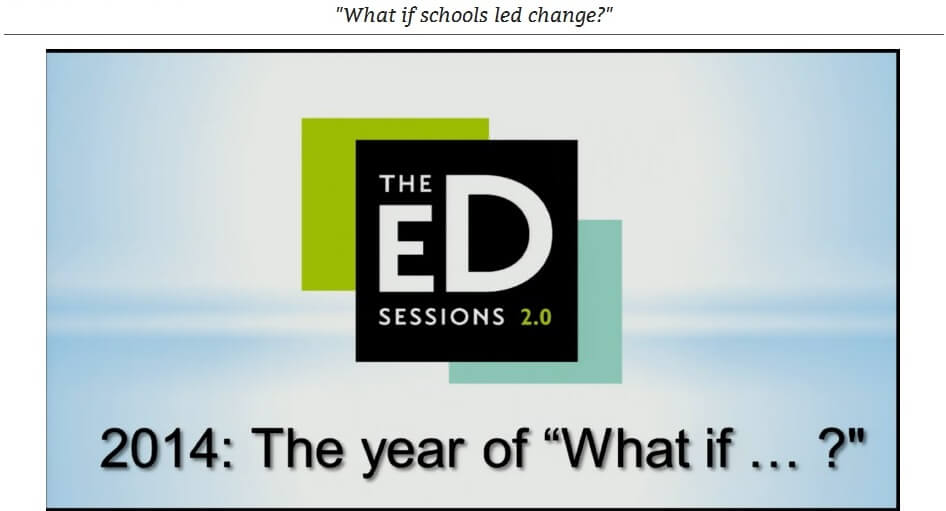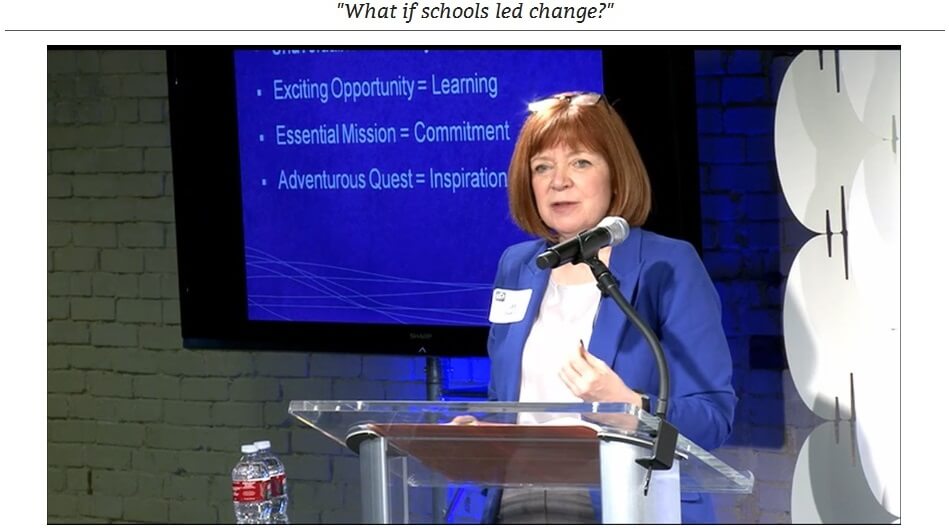Strategic Planning in Idaho Public Schools: What if schools led change?

The state of Idaho now requires all school districts and public charter schools to develop and maintain strategic plans, as one of several recommendations from a Governor’s Task Force to improve student performance. On May 6, 2014, I joined the ED Sessions 2.0, a monthly speaker series for Idaho educators, for “What if schools led change?” a discussion about strategic planning for schools.

Nationally, Idaho ranks poorly in several areas of school performance. But the J.A. and Kathryn Albertson Foundation (JKAF) has made education improvement its priority over the past decade. Its “Don’t Fail Idaho” public awareness campaign has sought to drive conversation and to involve broad stakeholders in shared action and accountability for improving schools. The Foundation’s “Go On Schools” initiative urging more Idahoans to seek post-secondary education, its support for Idaho Leads’ efforts to improve teaching and school leadership, and its support for high quality charter schools have also been aimed at this goal. Another part of its work has been the ED Sessions, convening education leaders to learn together. Last week I had an opportunity to speak at the ED Session focusing on new legislation requiring every school district and charter school to develop and adopt a strategic plan by September of this year.
This legislation is one of 20 recommendations made by the Governor’s Task Force for Improving Education. While well-intentioned, many schools and districts already have plans and may not see the need to do anything different from what they are already doing. In fact, one district superintendent noted that her district has had a strategic plan for 15 years that they update annually. Unfortunately, that plan hasn’t moved the needle on student performance, but she doesn’t see the legislation as requiring anything new.


Imagine what could happen if schools looked beyond the mandate to an exciting opportunity to change the way teaching and learning happens in Idaho schools and asked four simple questions:
1. What do we want to make happen to improve student achievement?
2. What are our assumptions about what it will take to get there?
3. What are the 3–4 strategic priorities we will implement to get where we want to go?
4. How will we know we are making progress?

This, of course, requires leadership. Having a clear, compelling statement — or vision — of where the school or district is going is one role for the leader. The first step, though, is to create a sense of urgency by pointing to the challenges being faced (poor outcomes) or the opportunities within reach (more attention being paid and new resources being made available). That urgency should ensure that everyone is approaching the planning process as a vehicle for change.

Leaders cannot be stopped by the discomfort change will create. They should anticipate that a small number will embrace change from the start and others will join in once they understand where they are going, but that some will resist change. Getting the majority on board is enough. Those that don’t see the need or aren’t excited at the opportunity may simply no longer fit into the plans for the future.
Using that same principle, if a sufficient number of school leaders step up to the challenge and use the strategic planning mandate as a mandate for change, they can be the first wave of improvement to benefit Idaho’s young people. What if schools led change? Idaho would quickly realize its potential as a national leader in educational achievement.
Watch the ED Sessions archive for a video of Tuesday’s session when it gets posted, and in the meantime browse other “What If” presentations on improving education.

Comment section